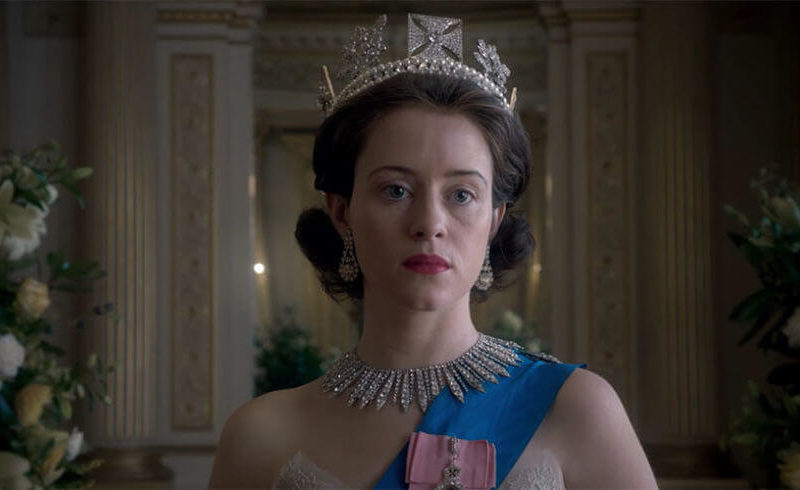
Time Travelers, a Netflix original series, follows time-traveling operatives in a post-apocalyptic world. Their mission is stop society's downfall by traveling back in time to change events. It stars Eric McCormack and Nesta Cooper. The Time Travelers can live in the body a person takes at the time of their death. But they must keep their mission in sight or they will forever be stuck in the past.
Continuum
Continuum, a sci-fi series about Rachel Nichols portraying a future police officer trapped in the present, is exciting. The series revolves around time travel and the paradoxes that can occur when time travel is involved. However, the series is also about human nature, love, and sacrifice. The sci-fi series also has great acting and characters that are relatable and real. Its plot is complex and can be difficult to follow due to the time paradoxes.

Life on Mars
Life on Mars is a great TV series for time travel. The BBC series was launched in February 2008 and concluded in 2011. It has three seasons. The series' protagonists travel back to the past in an attempt to improve the world today. Unfortunately, the past isn’t as perfect as they had hoped. This is the model that the new Doctor Who series follows.
Barry Allen
Barry Allen, the television show's "The Flash", can travel through time with incredible speed. His body vibrates at extremely high speeds, allowing him to travel through the time and past walls. He is also able to think and move at light speeds. He is also able to heal himself much quicker than normal humans, making him an exceptional superhero.
The 4400
"4400", a television series, is based upon the concepts of time travel as well as supernatural powers. After being away for many years, the show follows a small group of people who return home to the same place. They are a group of people with unique skills, but they all have one thing in common: they are all 4400. The show features time travel and supernatural healing abilities.
Timecop by NBC
Although the name "Timecop" sounds simple, this show is far from it. It's a cliche, and the main characters aren't even interesting. The main character is a police officer hired by the Time Enforcement Commission (TEC) to track down rogue criminals who travel through time. He has to deal also with a corrupt senator that wants to plunder the past for his presidential campaign. The show, which aired for only one season, was canned after only 13 episodes.

NBC's Voyagers!
In 1982, NBC promoted Voyagers! Voyagers was promoted on NBC in 1982 as one of their new shows. They placed pictorial ads for the show in TV Guide magazine, which was the most read magazine at the time. The show did not make the mark advertised and was rated last by Nielsen. As a result, TV Guide was quick to criticize NBC for false advertising.
FAQ
Are TV commercials targeted to target?
To target an ad, it is essential to find out what people are viewing at the same time.
To put it another way, if you want reach someone who watches football Sunday afternoons, advertise during football matches. You can reach people who watch movies on Friday night by advertising during movie times.
You can reach people at dinner by advertising on prime-time TV.
Knowing what people do to your ads is key. It means being able to see what programs they are watching.
Thanks to new technologies, such as DVRs or streaming video, data is now more easily accessible.
But don't forget that every person has his own preferences. It's impossible, therefore, to predict which program someone will view next.
You should test different ads. Based on real-world feedback you will discover what works the best.
What are the different styles for commercials?
Three types of commercials are available: TV Commercials; Radio Commercials; and Print Ads.
TV commercials typically last 30 seconds. They are used often to promote brand awareness.
Radio commercials can be longer than 1 minute and are used for product marketing.
Print ads are usually shorter than 2 to 3 minutes and targeted at specific audiences.
What type advertising is on TV?
Television is a communication medium where images are used for messages. It is the most viewed media in the world. The annual value of the television industry exceeds $100 billion.
There are many types of television advertisements. They can be broken down into two main categories.
-
Commercials (also called "TV commercials") are 30 seconds or more in length.
-
Programs/Series (also known as "programming") These programs are typically 20 minutes long. However, some may be shorter.
Commercials can be seen during commercial breaks. They are typically between every half hour and an hour of programming. They can also be shown when there is no broadcast. These include infomercials, before-and-after shows, and public service announcements.
The main component of any channel is its programs. Each week, most channels air multiple series. Some networks only show one series per day. Some networks will air multiple series at once. Some channels are specialized in showing movies, sports events, and news.
Since its inception, advertising on television has evolved significantly. Television was initially used primarily to entertain people in the 1950s. People would watch I Love Lucy or Father Knows Best shows, then head outside to play and have fun with their friends. As technology advanced, however, people began using television more often to get information about products and services. A television advertisement could help someone learn about the features of a particular car and how to buy it.
How much does a commercial cost to produce?
Production costs money for a commercial. The amount depends on the length of the spot, the number of actors involved, the location where the shoot takes place, etc.
A 30 second commercial will typically cost between $20,000-40,000.
Statistics
- 93 percent of American adults listen to the radio over the course of the week. (marketingevolution.com)
- To get estimated costs for airing a 60-second TV commercial in different regional markets, check out the following figures in this TV ad pricing chart from the media experts at Casual Precision. (fitsmallbusiness.com)
- Video-ad views on OTT (over-the-top) devices grew 63% year over year in Q3 2016, and the trend is expected to continue, further crippling traditional TV advertising. (clearcode.cc)
- Not to mention, sales rose an incredible 11% following the launch of this commercial. (qualitylogoproducts.com)
- In fact, when the ad first launched, Dos Equis quickly became one of the fastest-growing beers, increasing its sales by over 22%. (qualitylogoproducts.com)
External Links
How To
How do I make money with my TV commercials?
You can earn money from your TV commercial through various means. You can earn money through a variety of means, including:
Advertising - Refers to any paid promotion which encourages viewers view your commercial.
Merchandising – After seeing your commercial, this refers to the sale of merchandise related your product.
Licensing - This refers to licensing your commercial so that other businesses can use it in their own promotions.
Syndication – This is when your commercial is syndicated to other networks.
Advertising revenue can be used to pay production costs, and it can also be used for future funding.
Advertising can generate substantial income, however it doesn't guarantee a return.
Before you can start making money with your TV commercials, it is important to determine what types of advertising you have. After that, you need to know more about each one before making a choice.
Next, consider where you'd like your commercial to be placed. For example, do you want to advertise during popular programs such as sitcoms or sports games? Maybe you want to reach younger audiences by placing your advertisement near children's television shows.
Finally, you should decide whether you want to produce your own commercial or purchase one from a third party. If you want to make your own commercial, it is important to find someone who can direct the actors, write the script and edit the final product. A pre-made commercial will save you time and money.
Once you have decided how you would like to create your commercial, it is time to start exploring other options. Consider these things when choosing an advertising channel.
Target Audience – This is the most popular way to advertise. Advertising to teens, young adults and women over 50 could be an option.
The key here is finding the right audience for your commercial. Targeting people who aren’t interested is a waste of money.
Placement - You need to consider how many people are likely to see the ad when you decide where to put it. If your plan is to advertise at a sporting event or other public events, it might make sense to place your commercial right before the first whistle. This will ensure that everyone who attends the event sees your commercial.
You may need to consider other options if your goal is to reach people living outside of your region. To reach a larger audience, you can use satellite dishes or cable TV to broadcast your commercial.
Production Costs: Most companies pay between $5,000 and $10,000 for each minute of commercial television. They charge advertisers a fee depending on the length of the spot.
One example is that a company may want to air commercial airtime for 30 second. Typically, this will cost $1,500. They'll have to pay $2,500 for 60 seconds.
To make your own commercial, expect to spend anywhere between $3,000 and $15,000. In addition, you'll need to hire a director, writer, producer, editor, and actors.
Time Frame - Another consideration to make when selecting an advertising method is how much time you will need to complete it. If you have a goal to sell products in one week, it won't make sense to wait until the Super Bowl before airing commercials. You will need to find a way to advertise quickly.
However, to reap the benefits of long-term exposure, it is important to put a lot of effort and time into creating a great commercial.
Cost per Viewer - Last, consider how much it costs to view each individual's commercial. This will depend on the size and number of views that you get.
An example: A commercial with 10,000,000 viewers will be more expensive than a one-minute commercial with just 1,000 views.
You'll need to consider all of these factors when deciding which option will work best for your situation. These tips will help you get started once you have decided on a strategy.